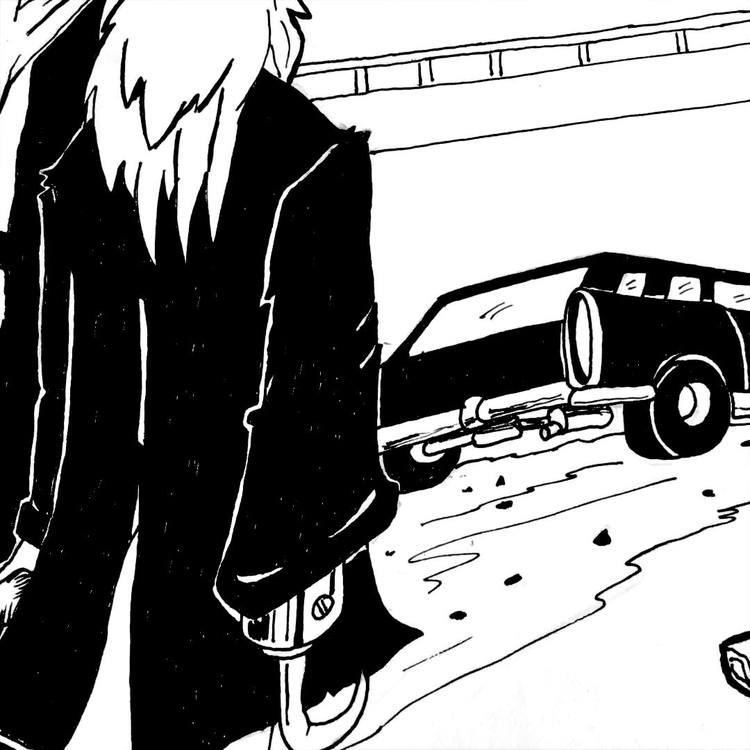 | ||
The Hook or The Hookman is an urban legend about a killer with a hook for a hand attacking a couple in a parked car. The story is thought to date from at least the mid-1950s, and gained significant attention when it was reprinted in the advice column Dear Abby in 1960. It has since become a morality archetype in popular culture, and has been referenced in various horror films.
Contents
Legend
The basic premise involves a young couple parking at a lovers' lane. The radio plays while they make out. Suddenly, a news bulletin reports that a serial killer has just escaped from a nearby institution. The killer has a hook for one of his hands. For varying reasons, they decide to leave quickly. In the end, the killer's hook is found hanging from the door handle. Different variations include a scraping sound on the car door. Some versions start the same way, but have the couple spotting the killer, warning others, and then narrowly escaping with the killer holding onto the car's roof. The couple are later killed.
In an alternate version, the couple drive through an unknown part of the country late at night and stop in the middle of the woods, because either the male has to relieve himself, or the car breaks down and the man leaves for help. While waiting for him to return, the female turns on the radio and hears the report of an escaped mental patient. She is then disturbed many times by a thumping on the roof of the car. She eventually exits and sees the escaped patient sitting on the roof, banging the male's severed head on it. Another variation has the female seeing the male's butchered body suspended upside down from a tree with his fingers scraping the roof.
Origin
The origins of the Hook legend are not entirely known, though, according to folklorist and historian Jan Harold Brunvand, the story began to circulate some time in the 1950s in the United States. According to Brunvand in The Vanishing Hitchhiker: American Urban Legends and Their Meanings, the story had become widespread amongst American teenagers by 1959, and continued to expand into the 1960s.
The first known publication of the story occurred on November 8, 1960, when a reader letter telling the story was reprinted in Dear Abby, a popular advice column:
Dear Abby: If you are interested in teenagers, you will print this story. I don't know whether it's true or not, but it doesn't matter because it served its purpose for me: A fellow and his date pulled into their favorite "lovers lane" to listen to the radio and do a little necking. The music was interrupted by an announcer who said there was an escaped convict in the area who had served time for rape and robbery. He was described as having a hook instead of a right hand. The couple become frightened and drove away. When the boy took his girl home, he went around to open the car door for her. Then he saw—a hook on the door handle! I will never park to make out as long as I live. I hope this does the same for other kids. —Jeanette
Literary scholar Christopher Pittard traces the plot dynamics of the legend to Victorian literature, particularly the 1913 horror novel The Lodger by Marie Adelaide Belloc Lowndes. Though the two narratives have little in common, he notes that both are built upon a "threefold relationship of crime, dirt, and chance... Such a reading also implies a reconsideration of the historical trajectory of the urban legend, usually read as a product of postmodernist conusmer culture."
Interpretations
Folklorists have interpreted the long history of this legend in many ways. Alan Dundes's Freudian interpretation explains the hook as a phallic symbol and its amputation as a symbolic castration.
Swedish folklorist Bengt af Klintberg describes the story as an example of "a conflict between representatives of normal people who follow the rules of society and those who are not normal, who deviate and threaten the normal group."
American folklorist Bill Ellis interpreted the maniac in the The Hook as a moral custodian who interrupts the sexual experimentation of the young couple. He sees the Hookman's handicap as "his own lack of sexuality" and "the threat of the Hookman is not the normal sex drive of teenagers, but the abnormal drive of some adults to keep them apart."
In popular culture
The Hook legend has appeared throughout culture, though has most often been depicted and referenced in horror films. Its prevalence, according to film scholar Mark Kermode, is most reflected in the slasher film, functioning as a morality archetype on youth sexuality.
There is also a episode dedicated to the hook man in Supernatural Season 1 (2005) titled Hookman
